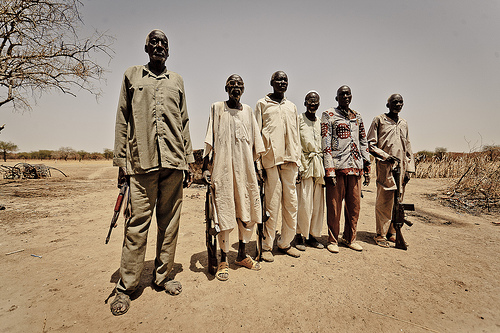
In writings on Abyei, there is often the assumption that the Misseriya and Dinka Ngok groups who have a stake in the region speak as one, or are spoken for by the handful of Misseriya and Dinka political “leaders” that are quoted in the media. In reality, there are gaps between the thinking of government representatives in the two capitals and their “loyalists” on the ground. One of the negative repercussions of this disconnect is that it has become increasingly difficult to align people and their positions. It has also created cleavages between the moderates and the hardliners from the same groups, the latter fearing that any compromise in their stance could somehow be interpreted as selling out.
The different views of Abyei between the center and the periphery are largely due to conflicting priorities. For many government officials in the state capitals, a definitive and workable agreement on the location of the border and the division of oil wealth takes precedence over managing expectations on the ground. Locals, on the other hand, are more concerned with how best to supervise the competition over resources between communities straddling the North-South divide, and how to deal with the day-to-day security threats they face.
Earlier this year, five of the nine Dinka-Ngok chiefs refused to turn up to crucial meeting in Kadugli because the paramount chief, Kuol Deng Kuol, agreed to let the Misseriya use the migratory routes after compensation for last year’s deaths was sorted out. “The Dinka-Ngok paramount chief is not well liked by the rest of his tribe,” said one Abyei Area Administration minister. “They accuse his grandfather of giving Abyei to the North.” Although the chiefs publicly deny their personal differences, comments like the ones above reflect the divided opinions they have on the Abyei issue.
The Misseriya militias too sometimes choose to pay scant attention to commands coming from Muglad or Diffra. Fakhradeen, a prominent Misseriya militia leader, for instance, is thought of as a “small fish in a big pond” with little political clout. The urbanized Misseriya do not share the same ideas of land rights with their more nomadic brothers who are less concerned with higher politics. For example, the Kagugli agreement created a migration committee to monitor the migratory rights of the Misseriya. But as one local Misseriya representative told Enough: “We do not know who are in this committee. We don’t care about people appointed from Khartoum or Muglad or other places. We want people from our community. We want people from here. People in Khartoum and Muglad are not moving, and they’re not around if there are any security incidents.”
These internal conflicts have contributed to a situation where moderate voices are shut out and perceptions become radicalized. In this context, negotiations become more difficult, as each party becomes less willing to concede ground. As both sides continue to build up their troop presence in the region, it’s all the more important for government officials to step in and work with local counterparts to devise meaningful strategies that are reflective not only of national interests but also take into account local grievances.
Photo: Elders in Maker Abior (Enough/Tim Freccia)

